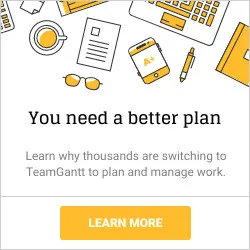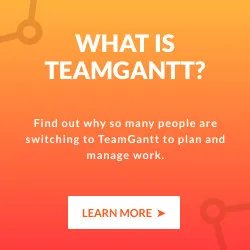How to Maximize Productivity Through Fun in the Workplace
.webp)
.webp)



A dinosaur and unicorn walk over to the marshmallow alien's burrow for a tea party before taking an afternoon ride on their flying pirate ship. I know. It sounds like I'm either crazy or tripping out on something strong. But, this is the normal day of a child in that magical place of their imagination!
Have you ever tapped into a kid's creativity? It's actually quite an amazing world they live in, without the limitations that we learn to implement as adults. While we all start out this way, somehow along the journey, we let life make us more serious. We turn off this imaginative part of our minds.
Why are kids so good at thinking outside the box? Simple; because most of their waking moments are spent at play. Who knew that it could also produce magical results in the business world?
Work hard and play harder
Somehow, when we become adults, society conveys the idea that everyone is supposed to grow up and become serious; that work and play must somehow become separated. These two ideas aren't exactly at odds. The opposite of play isn't work, it's depression. Once organizations understand that work and play can, and should, co-exist, they can discover one of the best-kept secrets that can make them the most sought-after company among potential employees.
The marriage of work and play had its start during the dot.com boom of the 90s, where geniuses and visionaries working out of their garage formed friendships and companies over casual coffee and wall Nerf basketball games. Surprisingly, there hasn't been a large amount of research devoted to this concept, but the studies that are out there find that having fun in the workplace increases overall employee productivity and organizational citizenship behaviors like helping other colleagues, showing pride in the company, and stronger loyalty to the business. When people have fun and collaborate together, they feel like they are on the same team.
So why should companies encourage people to have fun? For one thing, it boosts overall morale and creative power. People are spending more and more of their time working, so they want to make the most of it by having a great time while they are there. Everyone wants to learn to think outside the box, yet most people still operate inside of it because they can't tap into the creativity waiting within.
Are you a robot or a comedian?
Think about it, when you listen to someone explain something in a voice reminiscent of Ferris Bueller's teacher, how much do you remember? Now, how about when you listen to a comedian? You probably can recall just about every story. As an 80s kid, I learned from muppets on Sesame Street like cookie monster. Call me crazy, but watching him eat cookies that violently just got my attention.
If you can bring fun into your presentations, your audience will remember both you and your message. I usually always try to open with a joke or two when presenting, while throwing additional humor into my talk along the way. I mean, if you're going to work hard to prepare a speech or convey an idea, don't you want your concept to translate to their long-term memory? Laughter is learning's gateway, as it puts you in the best frame of mind to absorb new ideas.
Creative ideas are just the beginning
When you bring recreation to the workplace, you not only promote creativity and innovation, which can increase your profitability, you also reduce costs in employee turnover and health care.
After all, work-place related stress costs American companies over 300 billion per year according to the World Health Organization. Think about it... stressful work environments squash imagination, and create unhappiness that contributes to physical and emotional health problems. It also means that disgruntled employees will leave at the first sign of something better. With over 40% of American workers reporting work-place stress, but only 11% of organizations having stress-reduction techniques in place, this concept is needed more than ever.
Striving to create a fun, exciting, dynamic workplace where collaboration, teamwork, and play is encouraged should be the goal of any company. Many organizations already have recreational areas for employees to decompress, and the trend is growing.
Neverland companies
The concept of bringing out the creative kid side of things into the corporate world has already been capitalized by several successful companies. Zappo's core values are to “create fun and a little weirdness.” Southwest Airlines was always on board since the beginning with the company's playful poster-child influence of Herb Kelleher. Cartoon Network, understandably joins the ranks too, with their CEO Stuart Snyder named the “Most Playful CEO” of 2012 by Playworks. He is often seen peddling around the company grounds on his oversized tricycle. A California-based company called Thumbtack, a firm that connects consumers with professional services online, fosters further camaraderie by having employees sit down together family style for lunches prepared by a professional chef. And, an app company called Team Buffer takes two intentional trips per year to intertwine fun team-building adventure with new project creation.
Google, on of the most well-known entrepreneurs of work and play, has led this revolution for years. Employees glide around the building on razor scooters and climb ladders between floors. They design their own workspace with treadmills and tinker toys while writing on walls. If that wasn't relaxing enough, there are also free massages, eyebrow shaping, yoga and pilates classes, free gym memberships, and TGIF parties. Google doesn't even require people to come in to the office... people just want to spend time there. I mean, who wouldn't want to be there with the free food, Lego play station, and scavenger hunts?. And, among all of this play, creative innovation happens daily through social interaction and collaboration.
Companies also use the gaming concept to find the playful side of their customers. Of course, the video game world has been following this blueprint for some time. However, other players are coming to the entertainment table. Nike + brings new gaming technology to runners, allowing athletes to log their mileage and race each other. This game promotes fitness as it taps into everyone's natural competitive spirit, but it also increases sales for Nike. Foursquare utilizes this approach by allowing frequent patrons to become mayors of their own little coffee shop based on the number of times they visit. Of course, the competition for hierarchy positions in this imaginary government world creates more business for the participating restaurants, coffee shops, and lounges. If you can find a way to create a fun environment for your customer, you will rarely lose them.
The academic world is starting to notice as well. Stanford University has a spring course titled “From Play to Innovation” taught by Brendan Boyle. He is one of the partners at a Palo Alto, California design company called Ideo, known for tapping into the imagination of their employees through play.
How do you find your inner child again?
If you're convinced you need to add a dash of fun to your work environment, you can bring about change in three ways; hire creative and fun people, make your work-place environment more “fun”g shui, and encourage your current employees to explore their forgotten kid side.
Hire employees with energy
We all know that one person that is the life of the party and can bring laughter wherever they go. You want to find creative people that enjoy laughter and life, with the ability to think outside the box and play well with others. Adding those personality types to your office environment can instantly change the dynamics and get people to loosen up.
“Fun”g shui your environment
Even workspace design can make a big difference in the overall feel and connectivity of the office. While some offices are encouraging “hot-desking,” others simply take down the walls so that everyone is able to collaborate more freely from their own space.
Like a breath of fresh air, ideas can flow more easily in this open environment. The spacious floor plan not only removes the physical walls, but breaks down hierarchy barriers as well. Organizations can still offer breakout areas for when employees want a more quiet work area, but forcing people to be aware of each other fosters a more collaborative ambiance.
Additionally, designing recreation centers where people can play a game of table tennis while talking about a project, or simply step away from their roadblock for a bit to shoot some hoops, can sometimes be just what is needed to foster a breakthrough.
Show your silly side
Good managers lead by example. If employees see management showing their silly side, they become more open to emulating that behavior. Fun is found among positive, safe relationships. If you strive to create that atmosphere, and then throw in games or office contests, you will see a whole new side of your employees.
Turn boring into the bomb
Sometimes, you may not have the power to reinvent the wheel, but you can look at unpleasant jobs and, with just a little effort, get creative on how to make it fun. I will leave you with an idea from the Guardian's playbook.
When British politicians were caught filing bogus expenses, the government scanned hundreds of thousands of receipts and put the files online for journalists to research. Since the reporters didn't have time to go through that enormous amount of data, they gave it to the public through a gaming incentive.
Guardian programmer Simon Willison put together an app that would give the player a randomly-chosen receipt to research. If the numbers didn't make sense, like the MP who charged $441 for a silver pen, you would then write up your findings and submit them with a big “Investigate This!” button. That particular receipt then went straight to the newspaper reporters.
The newspaper then tracked which public “investigators” had the most finds. People got into competitions and made a game of a very arduous task. In less than four days, the 20,000 players had gone through 170,000 pages of receipts. Not bad for just adding a little friendly competition and fun to the mix.
When faced with a more mundane assignment, always try to ask yourself, “How can I make this fun?” For example, if you have a long list of people to call on the phone, and you don't need your computer in front of you, do it from a relaxing hot tub. Or, if you want to get out of the office, there are plenty of beaches that still pick up wifi, allowing you to work to the rhythm of waves and the sand surrounding your toes. There are ways to make even the more difficult job easier if you apply a little creativity to the problem.
The company that plays together, stays together, and hits payday together. Finding ways to reduce stress and releasing your playful side will go a long way toward making your organization the most sought-after place to work on the market.
When you can offer both work and play in one unique package, you help people discover their inner child that is just screaming in us all to be heard. Deep down, no one really ever wants to grow up! Who knew creating a business model based on Neverland could actually work?